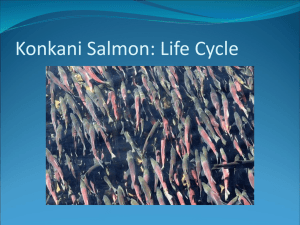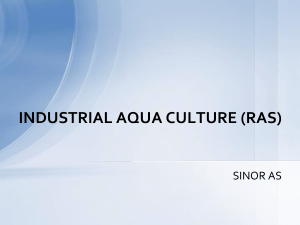Salmonid Life Cycle - Cornwall Rivers Project
advertisement
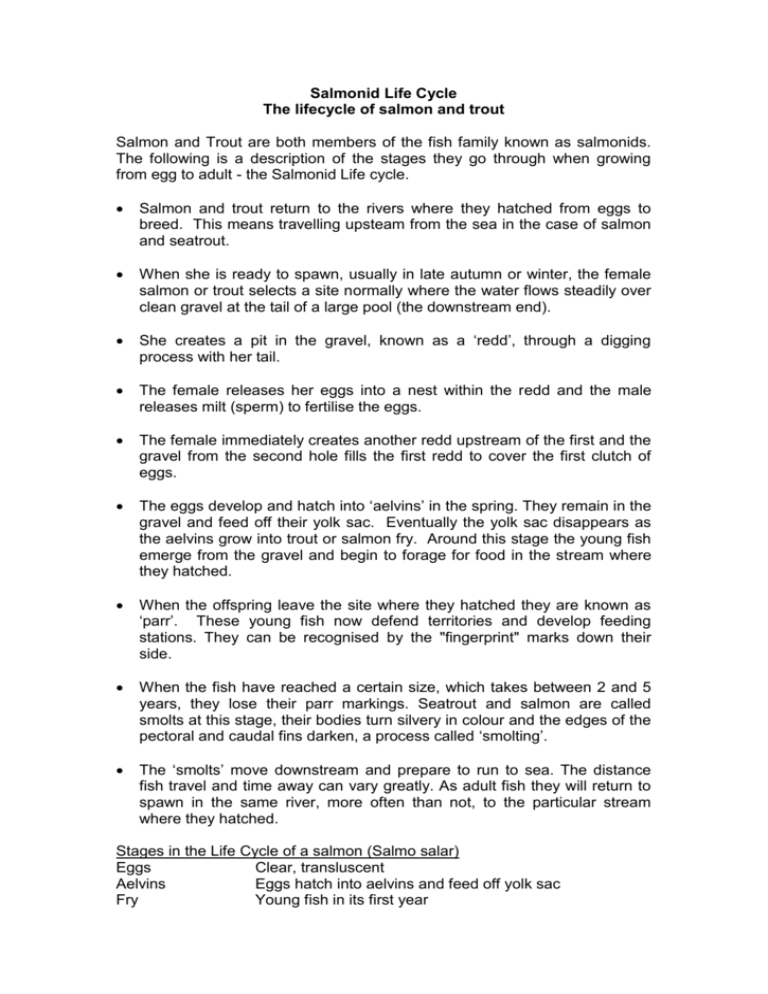
Salmonid Life Cycle The lifecycle of salmon and trout Salmon and Trout are both members of the fish family known as salmonids. The following is a description of the stages they go through when growing from egg to adult - the Salmonid Life cycle. Salmon and trout return to the rivers where they hatched from eggs to breed. This means travelling upsteam from the sea in the case of salmon and seatrout. When she is ready to spawn, usually in late autumn or winter, the female salmon or trout selects a site normally where the water flows steadily over clean gravel at the tail of a large pool (the downstream end). She creates a pit in the gravel, known as a ‘redd’, through a digging process with her tail. The female releases her eggs into a nest within the redd and the male releases milt (sperm) to fertilise the eggs. The female immediately creates another redd upstream of the first and the gravel from the second hole fills the first redd to cover the first clutch of eggs. The eggs develop and hatch into ‘aelvins’ in the spring. They remain in the gravel and feed off their yolk sac. Eventually the yolk sac disappears as the aelvins grow into trout or salmon fry. Around this stage the young fish emerge from the gravel and begin to forage for food in the stream where they hatched. When the offspring leave the site where they hatched they are known as ‘parr’. These young fish now defend territories and develop feeding stations. They can be recognised by the "fingerprint" marks down their side. When the fish have reached a certain size, which takes between 2 and 5 years, they lose their parr markings. Seatrout and salmon are called smolts at this stage, their bodies turn silvery in colour and the edges of the pectoral and caudal fins darken, a process called ‘smolting’. The ‘smolts’ move downstream and prepare to run to sea. The distance fish travel and time away can vary greatly. As adult fish they will return to spawn in the same river, more often than not, to the particular stream where they hatched. Stages in the Life Cycle of a salmon (Salmo salar) Eggs Clear, transluscent Aelvins Eggs hatch into aelvins and feed off yolk sac Fry Young fish in its first year Parr Smolts Grilse MSW (Salmon) Kelts Spring Salmon Juvenile salmon in 2nd or 3rd year in freshwater Young salmon leaving fresh water for first visit to sea Young salmon that has spent 1 winter at sea before returning to the river Multi Sea Winters fish (spent more than 1 year at sea) Salmon that have spawned Salmon that have spent at least 2 years at sea and return to freshwater from Jan to May to spawn the next autumn.



